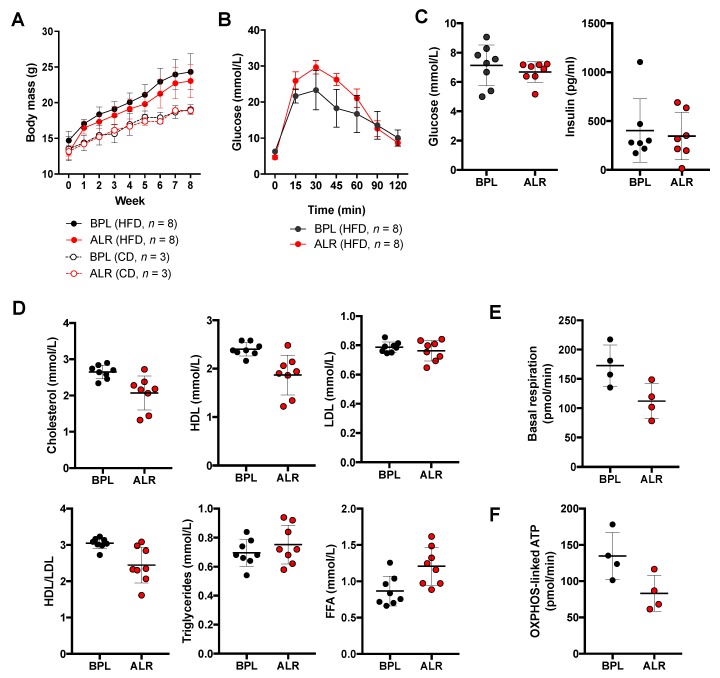Figure 5.
The B6-mtALR mice exhibited higher susceptibility to diet-induced glucose intolerance. (A). Female mice were fed with high fat diet (60 kJ% fat, n = 8/strain) or control diet (13 kJ% fat, n = 3/strain) for 8 weeks starting at 4 weeks of age. Body mass and weight gain due to the high fat diet were unaltered between strains. HFD: high fat diet; CD: control diet. BPL: B6-mtBPL; ALR: B6-mtALR. (B) Intraperitoneal glucose tolerance test was conducted after 8 weeks of feeding. B6-mtALR mice exhibited impaired glucose tolerance compared to B6-mtBPL. Main effect of strains: descriptive p = 0.0238, interaction between strains and time: descriptive p < 0.0001, two-way nonparametric analysis of variance. (C) Levels of glucose and insulin were determined in morning-fasted serum samples obtained HFD-fed B6-mtBPL and B6-mtALR mice. (D) Lipid profiles were measured in the same samples as tested in c. Cholesterol, descriptive p = 0.0057; HDL, descriptive p = 0.0038; HDL/LDL, descriptive p = 0.0054; FFA, descriptive p = 0.0115; t test. HDL: high-density lipoprotein; LDL: low-density lipoprotein; FFA: free fatty acids. (E,F) Primary hepatocyte prepared from mice fed with HFD demonstrated the levels of basal respiration and OXPHSO-linked ATP production were lower in hepatocytes from B6-mtALR than those from B6-mtBPL. Descriptive p = 0.0389 (E), descriptive p = 0.0446 (F), t-test.

